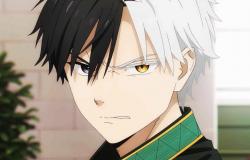Today we bring two great books, the classic Gulliver’s Travels of Jonathan Swift and the illustrated album Giant of Javier Andrada Guerrero.
Gulliver’s Travels was first published in 1726. It is a well-known novel, but currently, unfortunately, little read. If I ask my students why Gulliver everyone knows himbut very few have read some of his adventures and none has enjoyed a complete edition of his text. I think the reason is the many summarized and childish adaptations that have been made of this critical, irreverent text with a great sense of humor. Gulliver’s Travels It is a narrative that denouncesthe defects that society had where Jonathan Swift lived and which unfortunately continue to exist todayFor example, political corruption or stupid justifications for wars, the egg issue may be a more rational justification than those found in some current wars. The work is full of symbolismssuch as the way to put out the fire in the Lilliputian queen’s chamber.
Trips are counted in first person by the protagonist, Lemuel Gulliver, the third of five brothers, who was an apprentice to the eminent London surgeon James Bates, and then studied Medicine. J. Bates recommended him as doctor of the Swallow, where he was sailing for three and a half years. After two years practicing medicine, she embarks again. Between trips, a shipwreck takes place. Gulliver, as best he can, reaches the coast, more dizzy from the action of the brandy than from the stormand exhausted by fatigue and alcohol, he goes to sleep having the best sleep of his life, but when he wakes up and tries to get up, he can’t move because he had arms and legs firmly attached to the ground. Well yes, this is the beginning of the great adventure, much more fun, ironic and symbolistthan everything we have seen on television and in the movies.
The book is divided into four blocks which correspond to the four trips: the trip to Lilliput and Blefuscu; the trip to Brobdingnag; the trip to Laputa, Balnibarbi, Luggnagg, Glubbdubdrib and Japan, and ending with the trip to the country of the Houyhnhnms. Each of these places is dominated by the human vices: The lilliputians are evil, ignorant and cruel; in Brobdingnag not very intelligent but very friendly; Laputa is the country of pedantry; the community of magicians who can speak with spirits lives on the island of Glubbdubdrib; and finally the Houyhnhnms are intelligent horses that dominate a degraded race of men, the Yahoos.
There are multiple editions that we can find of Gulliver’s Travels; Editorial Alliance with translation by Begoña Gárate Ayastuy; Alma Publishing It has a beautiful edition with a translation by Antonio Rivero Taravillo and illustrations by Jordi Vila Delclòs. The edition of the Sixth Floor Editorial with illustrations by Javier Sáez Castán and translation by Antonio Rivero Taravillo. My favorite is the edition of Gutenberg Galaxy with translation by Emilio Lorenzo and illustrated by Guillermo Pérez Villalta, a masterpiece with 424 pages with very good paper, removable pages. Large size 27x 21. Gulliver’s Travels is a science fiction novel? Is it a book trips? Is Utopia? Is a satire? It’s a moralistic essay? Read it and create your own opinion.
On the other hand, and following in the wake of this great classic we have Giant. It is a large illustrated album that does not hide at any time that it is a tribute to Gulliver. Its first pages do not contain text, in the end we find the story. The protagonist is Lion, a child of 4 or 5 years. Like every night, she goes to bed early and falls asleep while listening to what her father tells her. But soon he awakens in a world where he is a big, enormous being, a Giant. A multitude of people, characters, stories run between her legs. Lion walks through a tiny world and that is in another era, in another time.
When León woke up on the beach he exclaimed: What little people! They look like mini Putians! Nobody was looking at him. Nobody told him anything. Everyone behaved as if he were not there. He thought he had become invisible, until a boy came to greet him.
Leon fascinated this new world and decided to explore it, he wanted to see everything, get to know that town and its history. HE I raise and it started.
That miniature world was full of detailyes, of contrastswith interesting scenes and there were people everywhere. The inhabitants of this miniature world seemed to be there all the time. destroying and at the same time building without rest, because the days, lThe months and years passed quickly. Just like the size of its inhabitants, time was very short and the years flew by.
He color has great importance In this story, from the gray tones of the first pages we go with the help of León’s flashlight to a cheerful yellow as if it were the dawn of a new era. Later are the different shades of red those that predominate and finally, crossing a bridge, his palette full of infinite colorss, it is a joyful spring that infects everyone with its joyful spirit.
Little readers recommend: Ismael González Millán, 2nd Baccalaureate student: Gulliver’s Travels It is one of the books that I remember most fondly from my childhood. I still have the one my grandfather gave me with a prologue by Pedro Zarraluki and a very interesting glossary with multiple words that I didn’t know. I found all four trips very interesting and my favorite is the Trip to Lilliput. Giant I loved it, it is a book with few words, but many readings. It is a tribute to the Lilliputians, although here they are called Miniputians.
Giant It has 72 pages. With a large size 38 x 28.5. Hard covers and high quality paper. Creates complicity between the little ones and adults. The same illustration conveys different ideas for each age. It is a journey through time and each page, each illustration gives you the possibility of playing different games. Recommended from 3 years old.
Activities with your reading: As always we do them in three moments.
Before you start reading: We think we are GiantsWhat would the world in which we move be like? What would our relationship with those beings be like? What would your attitude be? Would you become a sovereign, their king? Do you prefer to be his protector?
While reading: We can draw different pictures with the history of our city.
Finished the book: We created the “search and find” game. In it we can place characters from our town, but together with our favorite toys from our childhood.
Authorship: Javier Andrada Guerrero, Zamora. Children’s and youth illustrator who collaborates with various prestigious publishers. He also teaches illustration workshops for children; He has developed projects for advertising companies and has designed sets for children’s plays. He studied at the School of Applied Arts and Artistic Trades in León, and in 1993 he moved to Barcelona to specialize in Illustration.
His first publications were with texts by other authors, such as the magnificent series of Pupi by María Menéndez Ponte, or Marquito Caballero that we have had previously on these pages.
He currently carries out his own projects as an author and illustrator.






